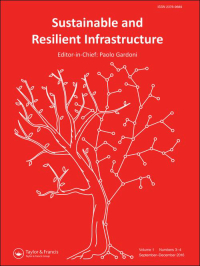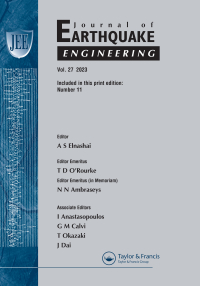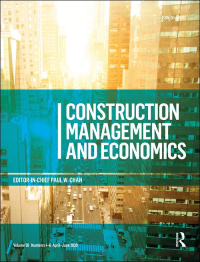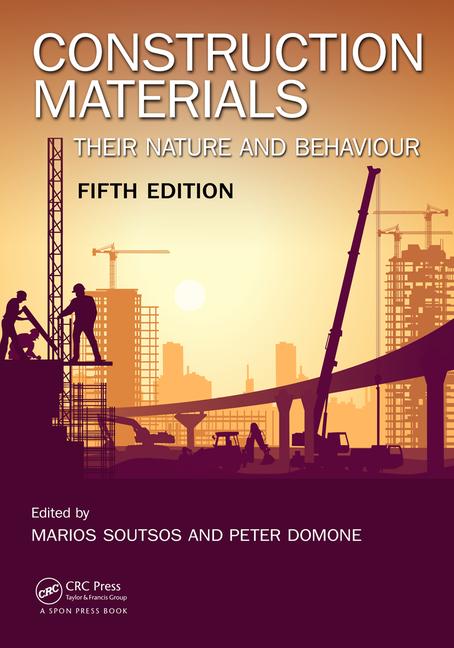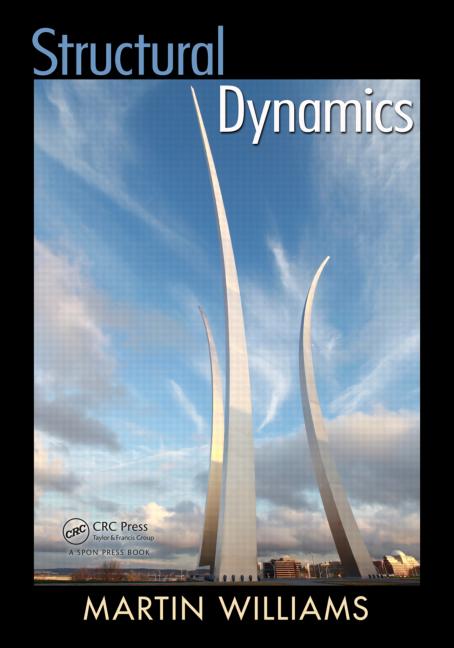Portfolio by the numbers
Exploring the public sector from municipal to national governments, and the private sector from individual homes to international companies, our Civil Engineering books and journals combine new research with the foundational knowledge necessary for our readers to advance and develop within this field.
Structure and Infrastructure Engineering
Structure and Infrastructure Engineering - Maintenance, Management, Life-Cycle Design and Performance (SIE) is a subscription-based, peer-reviewed journal covering recent advances in maintenance, management and life-cycle performance of a wide range of infrastructure systems, such as: buildings, bridges, dams, road networks, railways, underground constructions, offshore platforms, pipelines, ocean structures, nuclear power plants, and other types of constructed facilities.
Sustainable and Resilient Infrastructure
Sustainable and Resilient Infrastructure is an interdisciplinary journal that focuses on the sustainable development of resilient communities. Sustainability is defined in relation to the ability of infrastructure to address the needs of the present without sacrificing the ability of future generations to meet their needs. Resilience is considered in relation to both natural hazards (like earthquakes, tsunami, hurricanes, cyclones, tornado, flooding and drought) and anthropogenic hazards (like human errors and malevolent attacks.) Resilience is taken to depend both on the performance of the built and modified natural environment and on the contextual characteristics of social, economic and political institutions. Sustainability and resilience are considered both for physical and non-physical infrastructure.
Journal of Earthquake Engineering
Journal of Earthquake Engineering (JEE) is a subscription-based, peer-reviewed journal covering papers on research and development in analytical, experimental and field studies of earthquakes from an engineering seismology as well as a structural engineering viewpoint. The JEE’s audience includes researchers and practitioners. The JEE welcomes for consideration the following relevant paper types, and articles received by the Journal will be subject to single anonymous peer review: research paper, technical note and discussion. Original state-of-the-art papers are also welcome. Timely papers on field investigations following damaging earthquakes will be considered for accelerated review and publication. Also, the JEE extends a special invitation to authors of short communications of new research findings that may not have been developed sufficiently to warrant full-length papers.
Construction Management and Economics
Construction Management and Economics (CM&E) is a subscription-based, peer-reviewed journal covering the management and economics aspects of the construction processes in the construction industry and the wider built environment. The journal aims to inform and advance academic debates in the various disciplines that converge on the construction and the built environment fields as a research topic. The journal's scope covers the entire range of construction services and processes provided by the architecture/engineering/construction sectors, including design and procurement through life management.
Tunnel Design Methods
Tunnel Design Methods covers analytical, numerical, and empirical methods for the design of tunnels in soil and in rock. The material is intended for design engineers looking for detailed methods, for graduate students who are interested in tunnelling, and for researchers working on various aspects of ground-support interaction under static and seismic loading. The book is divided into seven chapters, covering fundamental concepts on ground and support behavior and on ground-excavation-support interaction and provides detailed information on analytical and numerical methods used for the design of tunnels, with applications, and on the latest developments on empirical methods. The principles and formulations included are used, throughout the book, to provide insight into the response of tunnels under both simple and complex loading conditions, thus providing the reader with fundamental understanding of tunnel behavior.
Shell Mechanics. Theory and Applications
This book is devoted to shells, a natural or human construction, whose modelling as a structure was particularly developed during the 20th century, leading to current numerical models. Many objects, in industry or civil engineering, come under shell mechanics, so a good knowledge of their behaviour and modelling is essential to master their design. The book highlights the very strong link between the deformation of geometric surfaces and the mechanics of shells. The theory is approached in a general formulation that can apply to any surface, and the applications bring the concepts and the methods of resolution to practical situations. It aims to understand the behaviour of shells and to identify the most important parameters, thus allowing a good interpretation of the numerical results. The reader will be able, with finite element software, to reproduce the proposed solutions.
Construction Materials
This established textbook provides an understanding of materials’ behaviour through knowledge of their chemical and physical structure. It covers the main classes of construction materials: metals, concrete, other ceramics (including bricks and masonry), polymers, fibre composites, bituminous materials, timber, and glass.
Structural Dynamics
Dynamics is increasingly being identified by consulting engineers as one of the key skills which needs to be taught in civil engineering degree programs. This is driven by the trend towards lighter, more vibration-prone structures, the growth of business in earthquake regions, the identification of new threats such as terrorist attack and the increased availability of sophisticated dynamic analysis tools.
 Africa
Africa  China
China  Japan
Japan 





